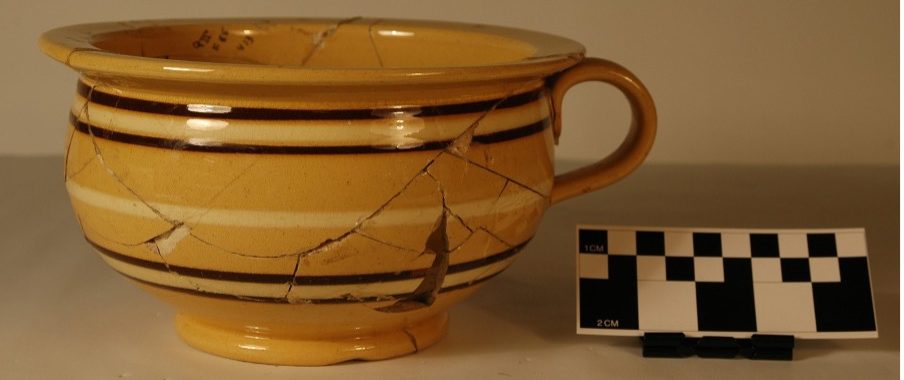
CMC Blog
Cincinnati’s Vanished Yellow Wares
By: Bob Genheimer, George Rieveschl Curator of Archaeology
Their yellow colors were bright and cheerful, a sharp contrast to their dull sanitary and kitchenware predecessors – redwares and stonewares. Nineteenth century American yellow wares, earthenwares with a buff paste and a clear glaze, were both functional and inexpensive. In most cases, they were the product of an assembly line process – a system that attempted to standardize output using relatively cheap raw materials and labor. Yellow ware vessels were produced in large numbers and in a variety of forms, but pitchers, jugs, mugs, chamber pots, mixing bowls and plates were most popular.
While East Liverpool, Ohio was the largest manufacturer of American yellow ware, Cincinnati was also a major center. From approximately 1840 through 1870, more than a half-dozen major yellow ware potteries operated in the downtown basin or across the Ohio in Covington, Kentucky. Nearly all of these were operated by British emigres who had learned the art of pottery manufacture in England. As a result, a variety of decorations designed for use on English whitewares of the first half of the 19th century were transposed onto a yellow palette.
Because most yellow wares were sanitary or kitchenwares, they suffered from both frequent breakage and intentional disposal associated with their less than favorable context (i.e., they were not fine china). You may see some examples of yellow ware in antique malls, but it is rarely passed down through the generations. Fortunately, urban archaeology conducted in the Cincinnati area has led to the discovery of hundreds of examples of locally-made 19th century yellow ware. Most of the examples came from excavated privy or outhouse shafts, typically deep shafts that preserve a stratified (layered) record of disposal.
While much of the archaeologically recovered vessels is undecorated - or just plain yellow - others are decorated with slip (a mixture of wet clay and pigment) designs, or are simply molded. The slip designs are perhaps the most spectacular. The British-trained potters did not have the refined whiteware clays in use in England at the time, so they adopted a much more narrow range of colors for slip decoration, colors such as brown and cream that were sympathetic to a yellow background.
Parallel bands of slip (Figure 1) were used to surround vessels, and often additional decorations such as cat’s eye or common cable were placed between the bands. Cat’s eye represents the placement of a single drop of multicolored slip onto the yellow body (Figure 2). The colors separate on the clay forming the appearance of a “cat’s eye.” Common cable, a sinuous treatment going around the vessel, is simply cat’s eye in motion – the result of a long series of drips placed while the vessel was rotated on a lathe (Figure 3). Somewhat less common are dendrites – tree or moss-like decorations that would bleed onto the surface and could be controlled through changing the rotation or orientation of the vessel (Figure 4). Urine or tobacco juice were often added to the dendrite mixture to encourage the tree-like bleeds.
By the late 1860s and early 1870s, the golden age of Cincinnati yellow ware was in fast decline. Larger Cincinnati potteries were switching to the production of whiteware pottery, which meant that vessel types formerly consigned to yellow bodies could now be made with cleaner, mass-produced white bodies. Yellow ware continued to be made by some Cincinnati manufacturers well into the 20th century, but never again did it exhibit the range of vessel types or decorations common to the middle of the 19th century.
So, the next time you see a heavily decorated yellow ware chamber pot or bowl at an antique mall, you will now know that it was the “height of style” in functional ceramics for as long as three decades in the 19th century.
Want to see more on Cincinnati yellow ware and urban archaeology excavations? Go to http://ohioarchaeology.org/images/stories/figures/2011/article%203--genheimer%202011.pdf
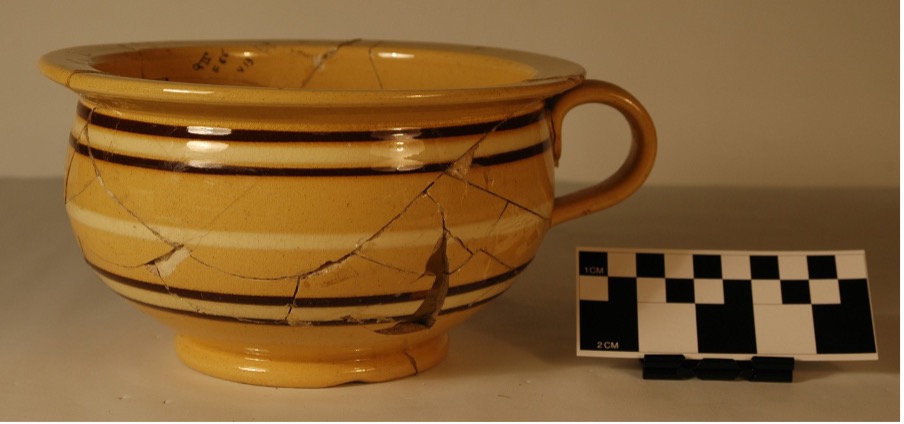
Figure 1. An annular banded chamber pot recovered from Betts-Longworth Historic District, ca. 1840-1860. Cincinnati Museum Center collections.
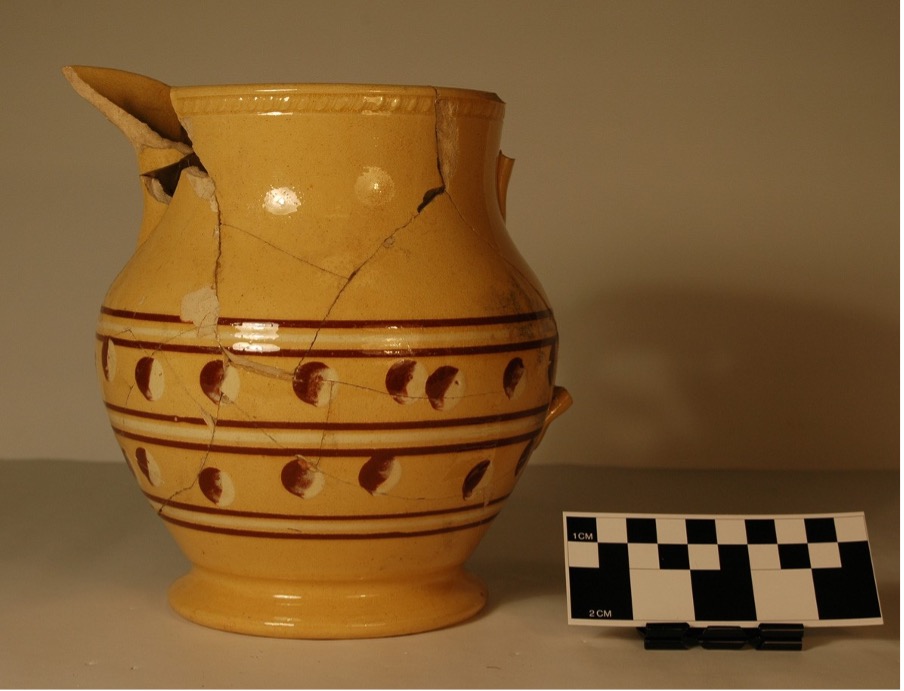
Figure 2. An elaborate jug with annular banding and cat’s eye from Betts-Longworth Historic District, ca. 1840-1850. Cincinnati Museum Center collections.
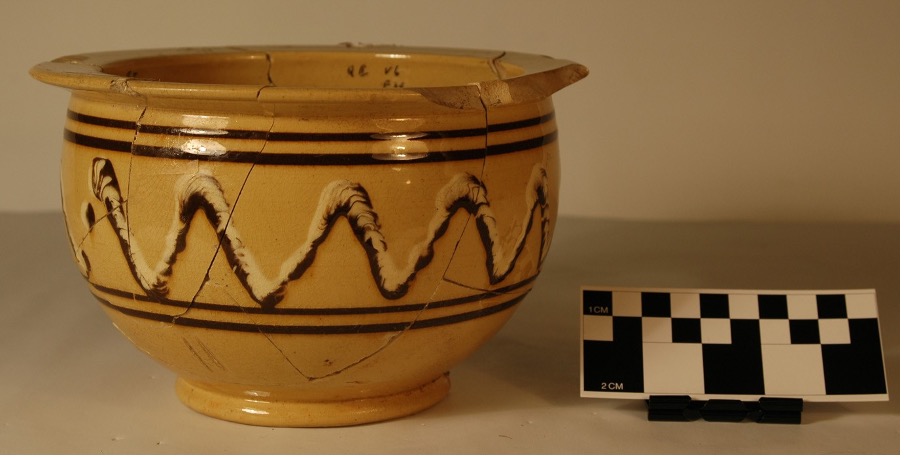
Figure 3. A chamber pot with annular banding and common cable from Betts-Longworth Historic District, ca. 1840-1850. Cincinnati Museum Center collections.
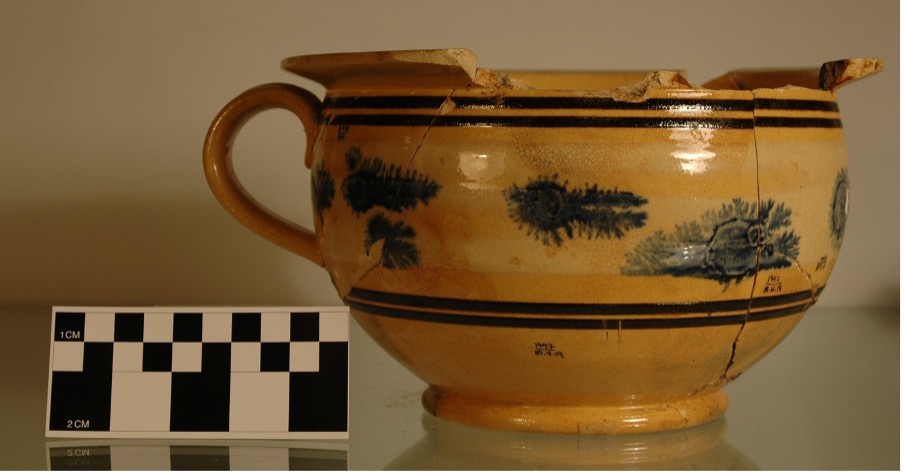
Figure 4. A chamber pot with annular banding framing dendrites, ca. 1869-1864. From Covington Rivercenter excavations. Behringer Crawford Museum collections.
Museum Admission
Includes Cincinnati History Museum, Museum of Natural History & Science and The Children’s Museum.
| Adult (13+): | |
| Senior (60+): | |
| Child (3-12): | |
| Member Adult: | FREE |
| Member Child: | FREE |
Members receive discounts!
Become a Member today to save on programs, exhibits and films throughout CMC.
Museum Hours
Open Thursday – Monday
10 a.m. to 5 p.m.
Closed Tuesday and Wednesday
Closed Thanksgiving Day and Christmas Day
Member’s-only early entry: Saturdays at 9 a.m.
Customer Service Hours:
Monday – Sunday, 9 a.m. to 5 p.m.
